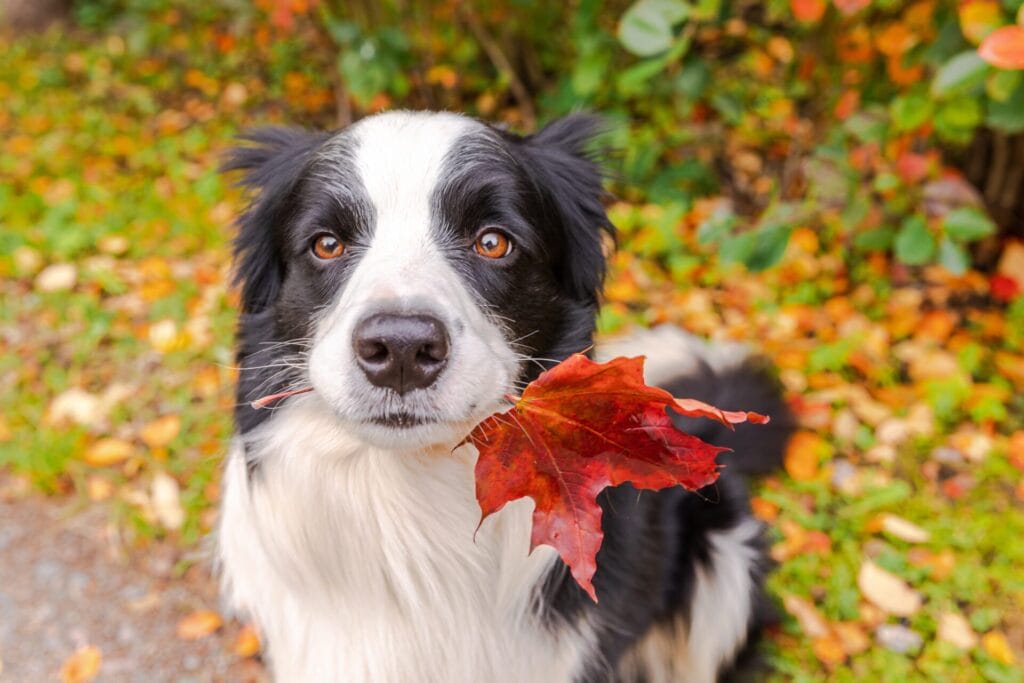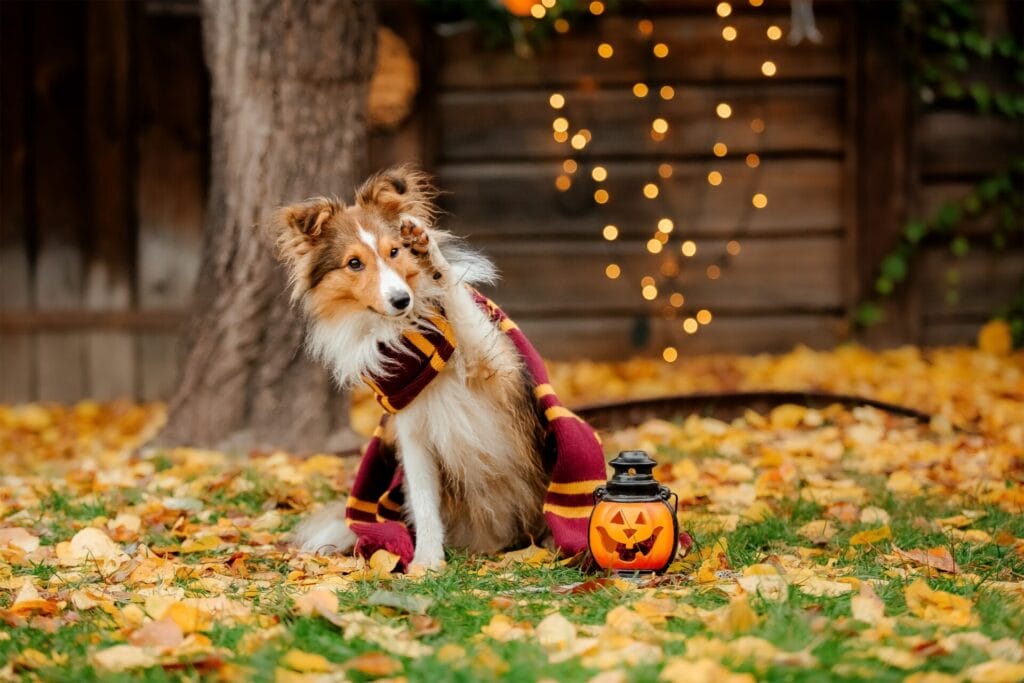The crisp fall weather is slowly making its way in. When the leaves start turning and the weather cools, fall can feel like a welcome break from the summer’s high temperatures. But not everything about the fall season is sugar and spice, especially for our dogs. Autumn can bring unique safety considerations for our canine friends. Here are some important fall safety tips to keep your dog healthy and happy this season.
Keep Choking Hazards Out of Reach
If you use a lot of holiday decor, keep small objects, hazards, or electrical wiring out of reach of your dog’s eager nose to prevent choking hazards. If you have children, watch for new school supplies like pencils, markers, and glue that can be common choking hazards. Cleaning supplies, sharp tools, or any pile of dangerous objects should be kept where your pooch cannot access them.
Dangerous Foods
If the arrival of fall gets you in the season to bake up some treats, keep popular fall spices out of your dog’s reach. These can cause serious stomach upset, diarrhea, kidney problems, and other side effects. Many fall safety tips and precautions come to mind for pets in a kitchen setting.
Autumn foods are very tasty, but most are actually dangerous for dogs and other pets. Because of this, it’s best to keep seasonal food out of your dog’s reach. Halloween candies and chocolates (including sugar-free sweets with xylitol) can cause serious health issues and risks. Thanksgiving foods are hazardous, too, such as those made with garlic and onions (which are toxic to dogs), fatty foods (that can cause life-threatening pancreatitis), and turkey bones (which can lead to choking, stomach obstruction, or pierced intestines).
Other ways to keep your dog safe around food include barricading the kitchen (if possible), throwing away garbage immediately, and securing the trash can. In addition, advise guests not to feed their dogs, inform them of what dogs can’t eat, and watch children around food. Call your vet or a poison hotline, like ASPCA Poison Control Center, if you think your pet has ingested something toxic.
Pro Tip: Give your dog something to work on (such as made-for-dogs chewing bones, like bully sticks or puzzle toys) during dinner so they’ll be occupied.
Seasonal Allergies
Fall is when many plants release their pollen into the air…and not just humans can get the seasonal sniffles! Dogs face seasonal allergies as well. Watch if your pup starts to experience itchy skin, sneezing, and watery eyes – these could be indicators they’re dealing with side effects from pollen, fleas, dust mites, or other seasonal allergens. Doing a little fall cleaning for your dog, such as washing their dog’s bed and food bowl and general cleaning around the house, could help reduce these allergies.

Keep An Eye on the Ground
Around this time of year, many people fertilize their lawns. While it’s great for the grass, it can spell trouble for dogs, so it’s important to avoid areas that have just recently been fertilized. Fertilizer exposure can cause fever, diarrhea, seizures, and, in serious cases, death. Even walking in these areas can create problems, as your dog may lick his/her paws later, allowing it to get into their system.
Practice Nighttime Safety
Practicing general safety is smart as it gets darker earlier in the evenings. The year’s shortest days are approaching, so it gets dark earlier. This can impact your daily walks, whether in the morning or evening. To avoid any issues, you and your dog can wear clip-on lights or reflective gear to notify vehicles and cyclists of your whereabouts (these may also ward off coyotes). Ensuring your dog is visible can also be helpful in case they get loose. And if your area doesn’t have street lights, you may want to carry a flashlight to see your surroundings better. This can reduce the chances your dog eats something they shouldn’t.
Consider getting a light-colored or reflective dog collar and leash for your dog, especially if they’re smaller and have darker coats. And don’t forget to wear light-colored clothing yourself!
Fall Foliage And Flora
Who doesn’t love the vibrant colors and that crunch under your feet during the fall? But fallen leaves, especially wet leaves, can actually be hazardous to our dogs. Not only can they hide fleas, ticks, snakes, and other critters, but ingestion can cause gastrointestinal upset. Furthermore, there are trees, plants, and flowers out there that are toxic to dogs. Some examples include Yews, Autumn Crocus, and Lillies. Many of these can cause many issues, from vomiting and diarrhea to heart arrhythmias and cardiac arrest to kidney failure and death.
While playing in a pile of fall leaves can be fun, especially when you have kids, remember that they bring dangers to our beloved animals.
Conclusion
As the falling leaves mark seasonal change, don’t be surprised that your pet’s needs may change during this time of year. Keep your pets safe and prevent accidents before they happen. These fall safety tips are good to remember when you and your furry friend head outside. Understanding autumn hazards and avoiding them is essential for you and your pet to enjoy fall safely.




















